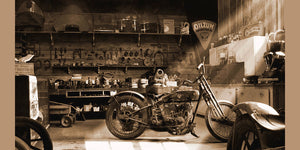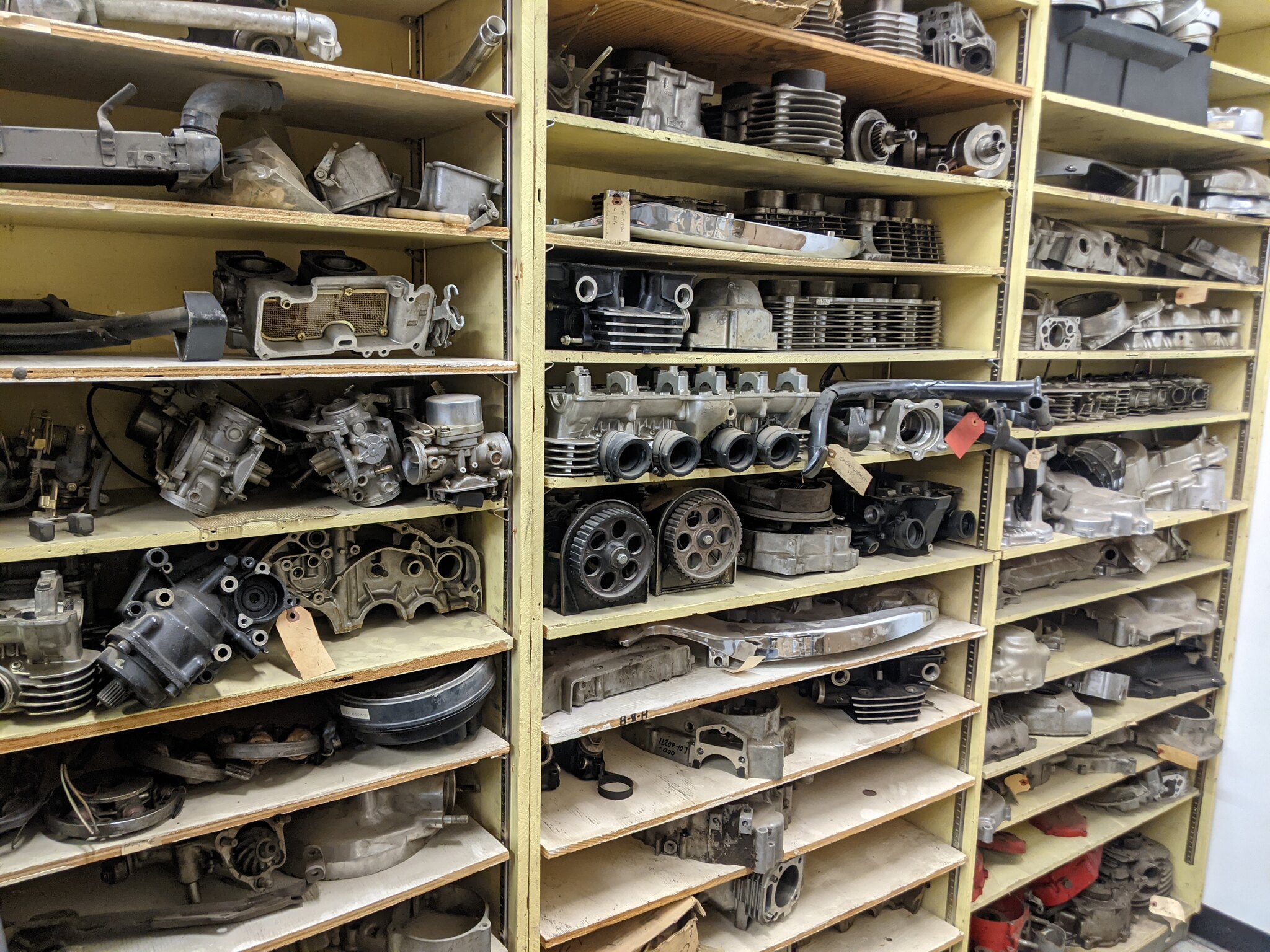Comprehending the Crucial Parts of a Motorcycle: A Comprehensive Guide for Lovers
For motorbike lovers aiming to elevate their riding experience and ensure their bikes run smoothly, recognizing the necessary elements of a bike is critical. Each element, from the engine's complex functions to the critical function of the braking devices, not only influences performance yet additionally safety and comfort. This guide will certainly go through the basic parts that every motorcyclist need to be familiar with, allowing notified options in both maintenance and possible upgrades. As we start this expedition, one must ask: how does each element engage to develop the seamless trip every fanatic looks for?
Engine Parts

The camshaft plays a vital function in controlling the timing of the engine's valves, ensuring the precise opening and closing necessary for effective fuel and air consumption, in addition to exhaust expulsion. This timing is essential to preserving optimal engine performance and efficiency. Furthermore, the carburetor or fuel shot system, relying on the motorcycle model, is accountable for mixing air with gas in the correct proportion for combustion.
The cooling system, either air or liquid-based, works to preserve the engine's temperature level within operational restrictions, protecting against overheating and making certain durability - mx gear nz. Each part, thoroughly made and integrated, contributes to the smooth operation of the engine, specifying the bike's power output and overall performance
Transmission System
Integral to the motorbike's capability, the transmission system makes certain reliable power transfer from the engine to the wheels. This system makes up several critical parts, consisting of the clutch, transmission, and last drive, each playing a vital duty in converting the engine's power into motion. The clutch, usually operated by a hand lever, serves to disengage the engine and engage from the transmission, enabling smooth equipment adjustments and regulated acceleration.
The transmission, usually referred to as the transmission appropriate, includes a set of gears that riders can by hand move with to readjust the bike's speed and torque outcome. These equipments are arranged in a series that enables the motorcycle to accelerate efficiently and preserve optimum engine performance across different speeds. A lot of motorbikes make use of a sequential transmission, calling for the motorcyclist to shift equipments in an established order.
Braking Systems
While comprehending the transmission system is vital to harnessing a motorbike's power, just as vital is the capacity to manage and quit that power properly, which is where stopping mechanisms come right into play. Brakes are crucial for safety and security and performance, providing the motorcyclist with the necessary control to navigate various terrains and problems. Usually, motorbikes feature 2 kinds of braking systems: disc brakes and drum brakes.
Disc brakes are extra common in modern-day motorcycles due to their exceptional performance. This system provides far better warmth click now dissipation, constant performance, and boosted quiting power, particularly in damp problems.
Alternatively, drum brakes, though less common, are still discovered in some bikes. They work by pushing brake footwear against the inner surface area of a drum connected to the wheel. While usually much less efficient in warmth dissipation and quiting power, drum brakes are simpler and more cost-efficient.
Recognizing these braking systems' subtleties allows bikers to keep their bikes properly and appreciate the design that makes sure safe and effective quiting.
Suspension and Guiding
Suspension and guiding systems are important components that substantially influence a bike's handling and experience convenience. The shock absorber, being composed of forks at the front and shock absorbers at the back, soaks up roadway abnormalities, enhancing stability and control. Front forks, typically telescopic or inverted, compress and rebound to minimize effects, while back shock absorbers keep tire contact with the roadway, critical for traction and safety.
Guiding, centered around the handlebars, links the rider to the motorcycle's directional control. The steering head bearings ensure smooth operation, permitting specific maneuverability. Appropriate placement and maintenance of these bearings are vital for predictable guiding feedback and reducing rider exhaustion.
The suspension's adjustability is another essential element; preload, damping, and rebound setups permit personalization to fit numerous riding conditions and designs. This versatility is crucial for optimizing efficiency, whether browsing city roads or dealing with rugged routes. Innovations like electronic suspension systems use real-time changes, enhancing experience high quality throughout varied surfaces.

Electrical Systems
After making certain a smooth and regulated adventure through effective suspension and guiding systems, attention turns to the electric systems, a pivotal aspect of contemporary motorbikes. These systems play an essential duty not just in beginning the engine but likewise in powering numerous elements that boost the capability and safety and security of the motorbike.
At the heart of a motorbike's electrical system is the battery, which stores electrical power necessary for beginning the engine and powering supporting systems - mx parts nz. The generator or generator, combined with the rectifier-regulator, makes sure the battery remains charged while the bike functions, transforming mechanical energy into electrical energy and maintaining voltage levels
The ignition system, an additional critical component, is accountable for firing up the air-fuel mixture in the engine's cyndrical tubes. Modern motorbikes often use an electronic ignition system, providing greater effectiveness and integrity compared to conventional systems.
Lights systems, consisting of fronts lights, tail lights, and indicators, are also vital, making sure presence and safety and security for the cyclist. Added digital elements such as sensors, control devices, and presents add to innovative attributes like fuel shot monitoring, anti-lock stopping systems (ABDOMINAL), and digital dashboards, further improving the riding experience.
Final Thought
A thorough comprehension of a bike's necessary components, consisting of the engine, transmission system, stopping devices, suspension, guiding, and electric site link systems, is important for enthusiasts aiming to enhance security, convenience, and performance. Mastery of these elements enables for notified decisions regarding upkeep and upgrades, ultimately boosting the riding experience. By incorporating this understanding, motorcyclists can guarantee their motorcycles run at peak performance and integrity, therefore maximizing both satisfaction and longevity of their vehicles.
For motorbike fanatics looking to boost their riding experience and guarantee their bikes run smoothly, recognizing the important components of a bike is vital.Integral to the motorcycle's performance, the transmission system ensures effective power transfer from the engine to the wheels.While comprehending the transmission system is essential to utilizing a motorcycle's power, just as essential is the capability to control and quit that power properly, which is where braking systems come click over here now right into play. Normally, bikes feature 2 types of braking systems: disc brakes and drum brakes.
A detailed comprehension of a motorcycle's necessary parts, consisting of the engine, transmission system, braking systems, suspension, steering, and electrical systems, is important for fanatics intending to maximize convenience, efficiency, and safety.